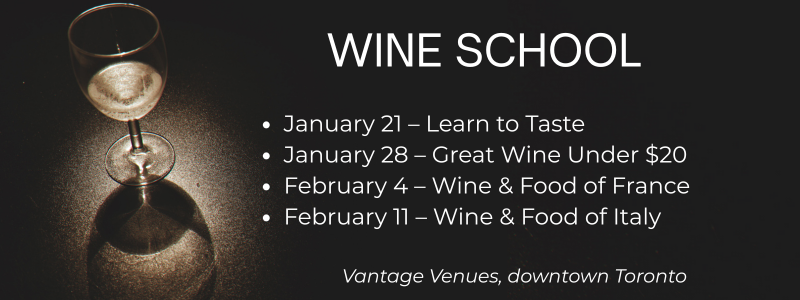Quick Sip: The Basics Between Bordeaux and Burgundy
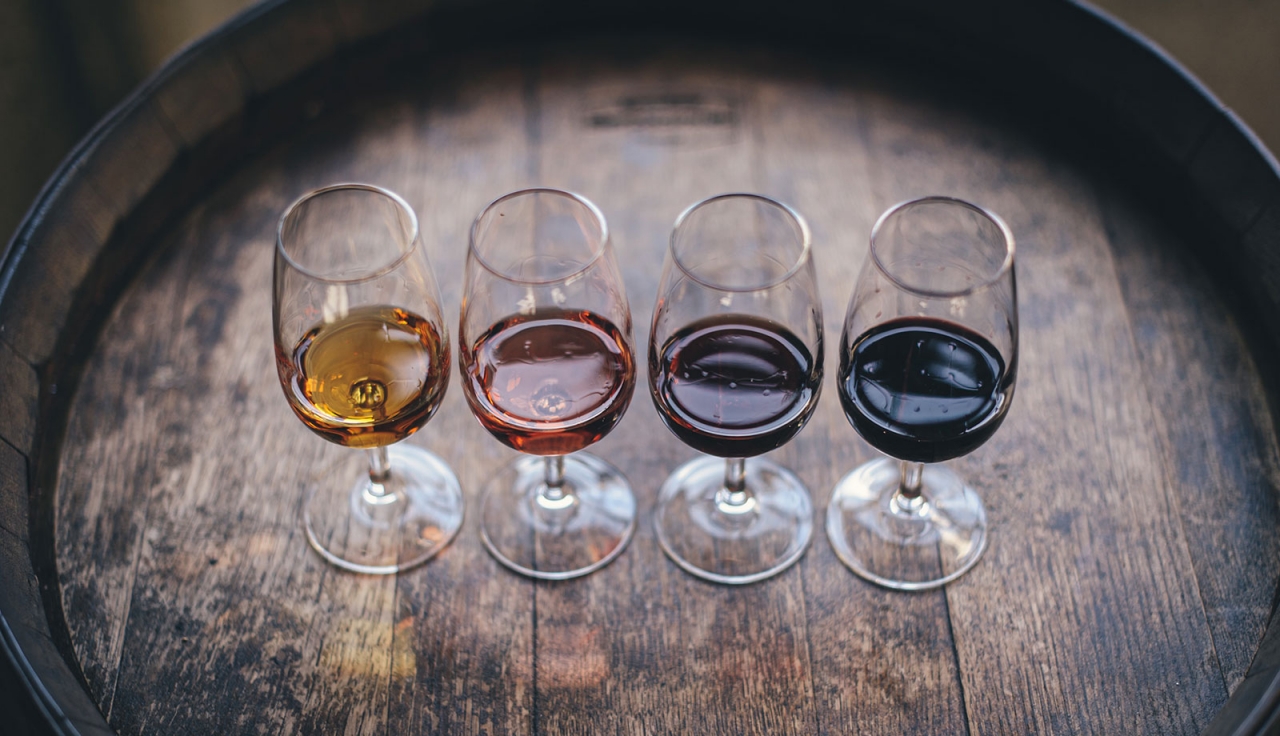
Bordeaux and Burgundy are wildly complicated, confusing, and convoluted. But this Quick Sip boils down the basics on what you need to know now.
By: Erin
I recently wrapped up a string of beginner classes on French wine. Both intriguing and challenging as France can be a tricky minefield to navigate when just starting out seriously learning about wine. Heck, it can be a headscratcher when you’re 15 years in.
The five-part series on France 101 includes a class dedicated to Bordeaux and a class dedicated to Burgundy. Decent enough, but with only three hours in a session, leaves a lot to be uncovered.
Academics and wine devotees spend their lives studying just one of these regions. To whip through one of these illustrious areas in only a few hours means you must get to the heart of it, and resist the rabbit holes of weirdo sub-appellations, intricate history, or complex legislation. All things that France adores.
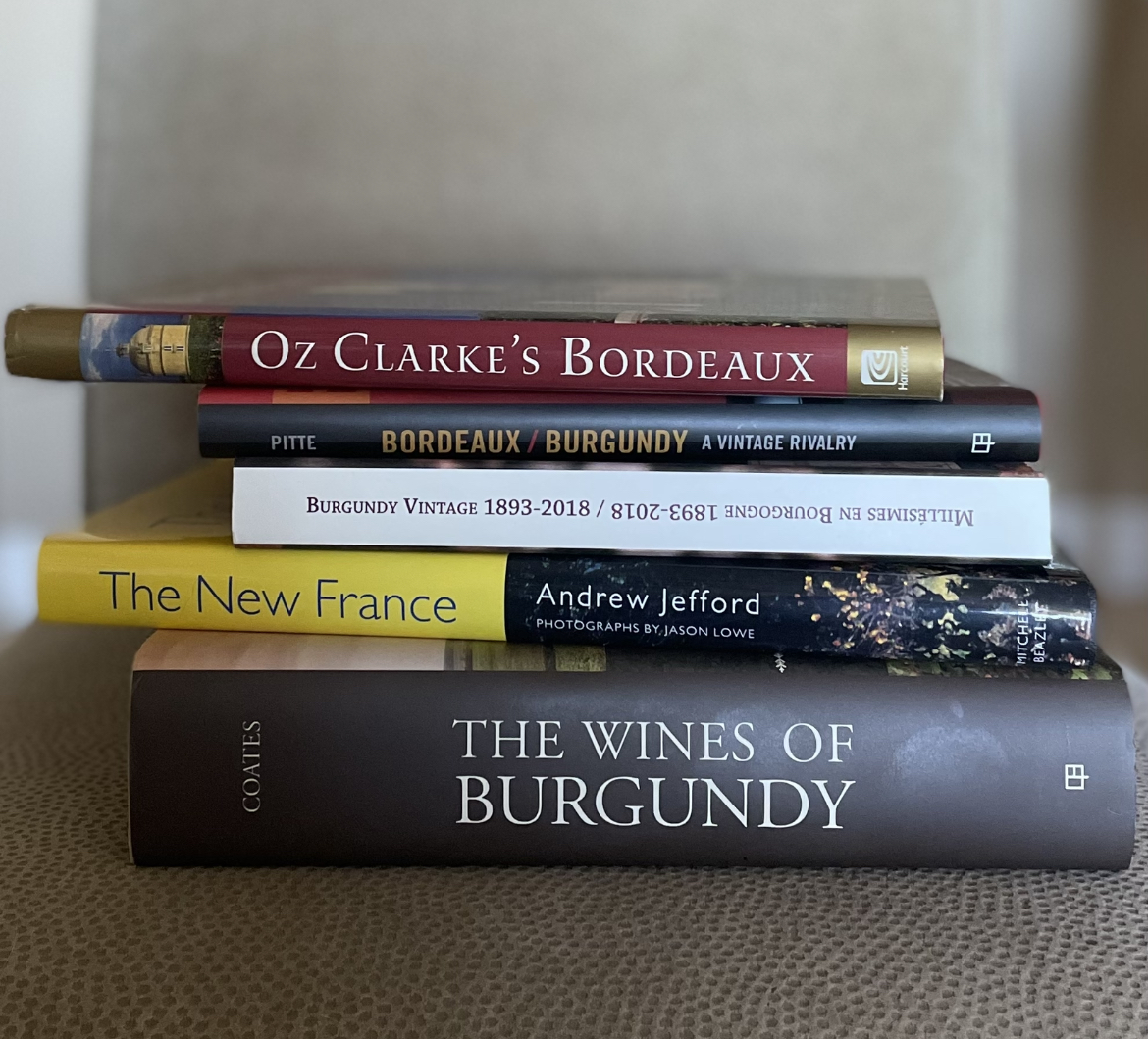

In my first career I was a journalist, useful training for my current roles leading wine classes and tastings and taking sometimes complex subjects and boiling them down to digestible bits. And I firmly believe that’s the key when learning about wine at all – especially esoteric France and its thousands of years of history. Overloading the students is cruel for them and fruitless for the teacher. Unless you simply like the sound of your own voice booming from the pulpit, audience interest be damned, you will witness, in real time, exuberant faces denigrate to slack-jawed, stunned expressions and glazed eyes.
To keep the students engaged, and ideally returning to take more, increasingly challenging courses (and thereby securing my employment for a few more years), my aim with 101 is to honour the basics.
Other than nailing a game of Trivial Pursuit, most of us don’t have use for memorizing Burgundy’s 600 Premier Crus. So, the following is how I’ve wrestled down the behemoths of Bordeaux and Burgundy. This is the quick sip to help you confidently navigate a wine list, pick up a bottle at the store, and understand where your taste lies and why.
The Quickest Sip
Bordeaux
France’s largest wine growing region is situated on the Atlantic coast. The wines are blends. Reds are made of Cabernet Sauvignon, Merlot, and Cabernet Franc. On occasion a splash of Petite Verdot or Malbec might be added. White wines are made of Sauvignon Blanc and Semillon, as are sweet dessert wines.
Burgundy
A comparatively smaller region that’s land locked in France’s north-east. The wines are single varietal, either from Pinot Noir for reds or Chardonnay for whites. In the south, you will find a bit of Aligoté for an easy sipping white wine. The Beaujolais appellation makes red wine exclusively from the Gamay grape.
A Longer Drink
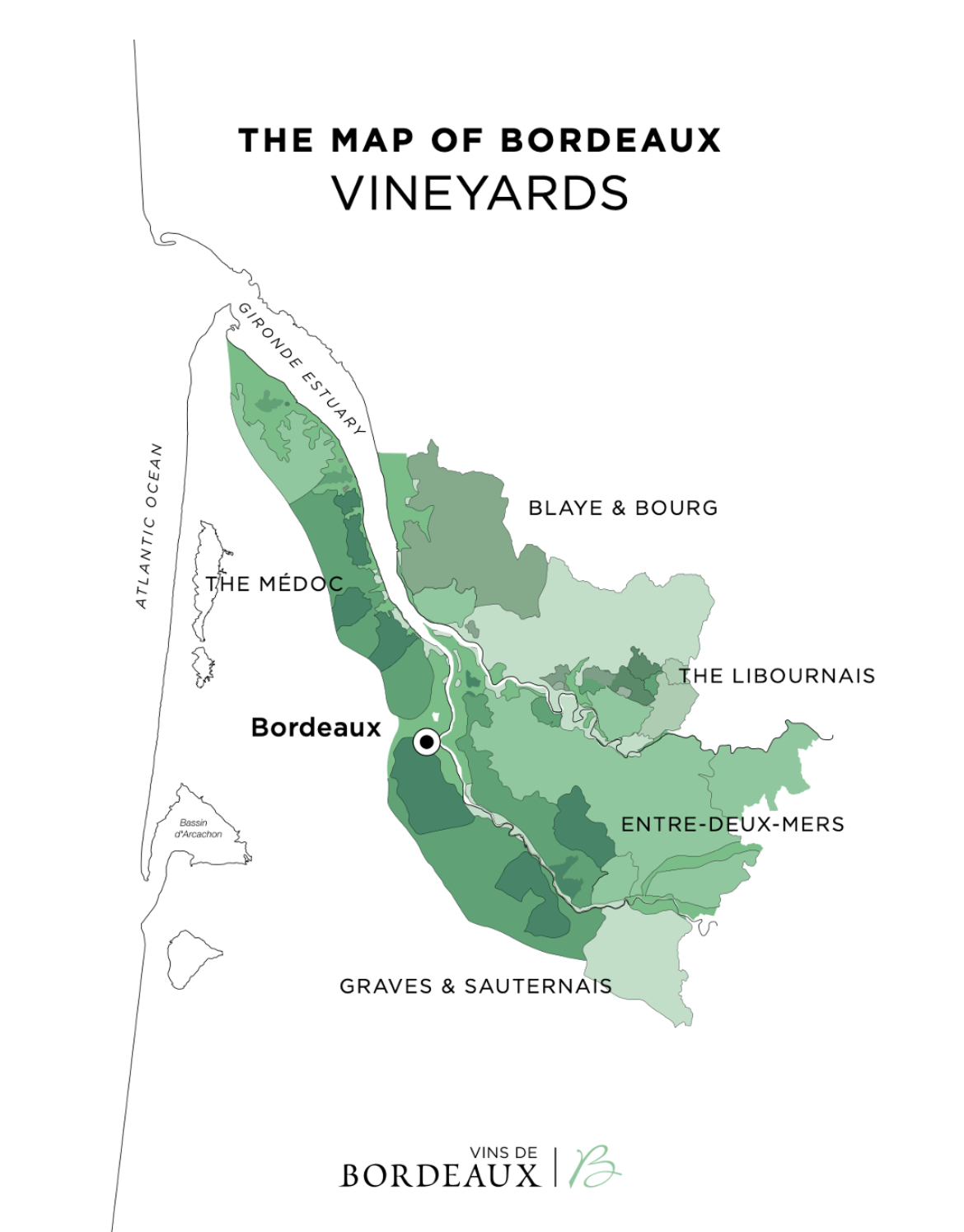
Bordeaux – The Key Take-Aways
Bordeaux is a blend
Red wines in Bordeaux are made predominately from Cabernet Sauvignon, Merlot, and Cabernet Franc, with the occasional smidgen of Malbec and Petite Verdot thrown in. White wines and sweet wines are a blend of Sauvignon Blanc and Semillon.
Vintage variation (the difference in weather each year) is very important in Bordeaux and the Bordelaise believe the sum is great than the parts. By allowing for blends, winemakers are granted the flexibility to express the best of each vintage.
There are three main regions to Bordeaux: Left Bank, Right Bank, and Entre-Deux-Mers
Bordeaux is a port city, butted up against the Atlantic Ocean. The main river that flows in is called the Gironde which then forks into the Dordogne to the north and Garonne, to the south.
The area that runs south of the Gironde is called the Left Bank and is largely made up of well-draining, gravel soils. Cabernet Sauvignon thrives in this terroir, and so, Cab Sauv is the most widely planted vine on the Left Bank. The Left Bank is also home to some of the most esteemed sub-regions in the world. Names like Médoc, Paulliac, Margaux, and Graves might sound familiar.
On the Right Bank, which is north of the Garone, you will find mostly clay-based soils. Here, Merlot thrives, and so, this grape is the most widely planted and used in the blends. Appellations include Pomerol and Saint-Émilion.
Entre-Deux-Mers literally means "between to seas" (even though it's the triangular shaped piece of land between the two rivers.) Red, white, and rosé is produced here, but only white wines, a blend of Sauvignon Blanc and Sémillon, can be AOC. Wines here are good quality and good value, if shadowed by the more prestigious Left and Right Banks.
Interesting (If Slightly Head Spinning) History
The most defining moment in Bordeaux’s modern history is the Classification of 1855. A ranking system that is still very much in use today.
Back in 1855 Napoleon wanted to host the world at an expo in Paris and charged the local legislatures to pick the top wines from their regions. In Bordeaux, a board of wine merchants ranked all the red wine producing wineries from celebrated first growth to still prestigious fifth growth tiers. (White wines were less important at the time and had their own ranking system, but it only considered sweet wines.)
In total, 58 châteaux made the cut (today there is closer to 61), a controversy then and still one now. All wineries came from the Médoc on the Left Bank, except for Haut-Brion, which is in Pessac-Léognan. It’s been argued the ranking system is outdated and needs modernizing. (For example, the highly respected Château Lynch-Bages still sits as a fifth growth despite fetching prices between $900–$4,200 a bottle, depending on vintage.)
Today, the dazzling first growths, still lauded for their pedigree and sought after by eager collectors around the world, are: Château Lafite Rothschild, Château Latour, Château Margaux, Chateau Haut-Brion, and Chateau Mouton Rothschild (which, after much campaigning, was promoted from 2nd Growth 1973).
And just to add to the mystique, the regions of Graves and Saint-Émillion, Cru Bourgeois du Médoc, and Crus Artisans have their own classifications.
Bordeaux for Normal People
Despite the celebrity swirling around Bordeaux, more than half of its wine production is basic level stuff, in many cases acceptably delicious, but sold at a far more budget-friendly three to 15 Euros a bottle.
The very swanky wines that elevate Bordeaux to icon status only make up about 5% of total production.
Still, Bordeaux is the largest wine producing region in all of France, producing 15% of the entire wine-obsessed country’s output each year.
Burgundy – The Key Take-Aways
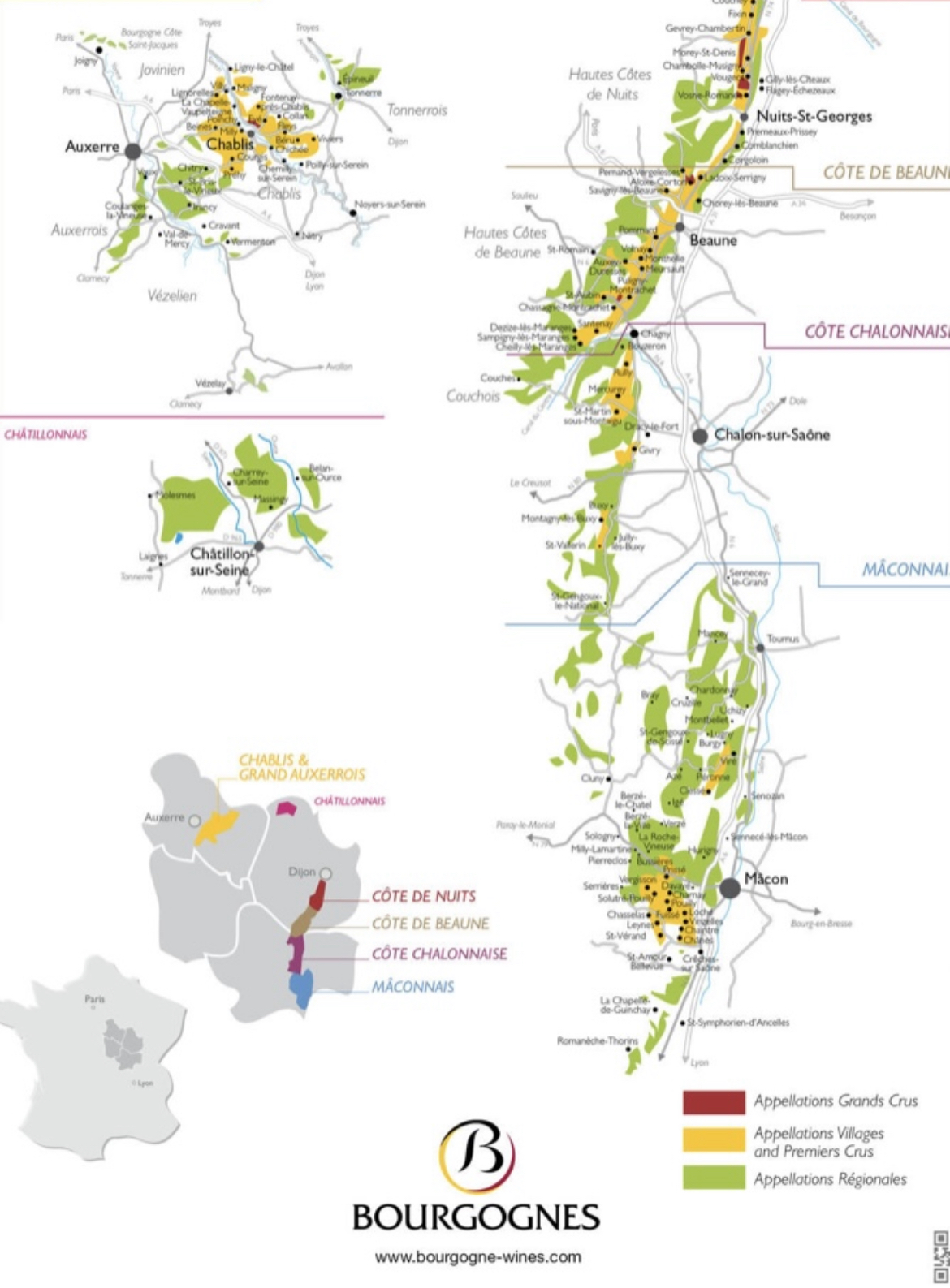
Burgundy is Single Varietal
Pinot Noir and Chardonnay are the wines that make up the overwhelming majority here. And they’re some of the best, most expensive and sought after in the world.
Secondary grapes are Aligoté for the white, especially in the Côtes Chalonnaise, a snappy and easy drinking wine that’s well suited to relaxed apéro. Gamay is the red grape of Beaujolais, Burgundy’s southernmost region.
There are Six Regions in Burgundy – and a Dizzying Number of Subregions
The Bourgogne are terroir obsessed. Over the roughly 325 kilometres the whole of Burgundy runs from north to south, there are thousands of demarcated subregions with sometimes the only difference being a slight shift in soil or climate. Land in Burgundy is likely the most studied, surveyed, and expensive in the world.
Due to this extraordinary, and maybe even neurotic, precision detailing each plot of vineyard, quality rankings start from basic Bourgogne, to Village, to Premier Cru, to Grand Cru.
Travelling from north to south, we start in Chablis, a region that is actually closer to Champagne than the rest of Burgundy. Famous for ancient Kimmeridgian soil left over from the Jurassic period, it only grows Chardonnay. Ranging from Petite Chablis at its most basic, to a single Grand Cru, which is further broken down into seven smaller parcels. The wines from Chablis are bright, steely, and crisp.
As we move south, we reach the to the fabled Côtes d’Or, or the Golden Slope, which is further divided into the Côte de Nuits in the north and the Côte de Beaune in the south.
The Côte de Nuits is mostly limestone soil. Pinot Noir thrives here – nearly 99% of vineyards are planted with the red grape. It’s also home to some of the world’s most iconic vineyards with prestigious names like Vosne-Romanée and Chambolle-Muigny. Despite its diminutive stature, stretching only 24 kilometres long and just over 3 kilometres at its widest point, the Côte de Nuits is home to 24 of Burgundy’s 33 Grand Cru appellations, and 133 Premier Cru sites.
The Côte de Beaune, with its clay soils, is known for some of the best Chardonnay in the world. In fact, all but one of Burgundy’s white Grand Crus are found in the Côte de Beaune (the other is in Chablis). It is home to prized appellations like Meursault, Aloxe-Corton, Pommard and Volnay. Fun fact: despite its stature for world-class white wine, the Côte de Beaune produces more red than white.
Côtes Chalonnaise is the next down the line as we head south. Both red and white wine is made across its five sub-appellations that enjoy a reputation for terrific value. The wines are fruit forward and less complex than the Côtes d’Or (there are no Grand Crus here), but regardless the wines are juicy and enjoyable.
This last region of Burgundy that still produces Pinot Noir and Chardonnay is the Mâconnais. Reds are inexpensive and whites are good quality. In 2020, after a decade of petitioning, the sub region of Pouilly-Fuisse was awarded the region’s first Premier Cru designation.
Beaujolais, which is still part of Burgundy, but makes wines only from the Gamay grape, is the odd ball child of the region. Pushing into the Rhône Alps, it becomes mountainous, the hills lush with green forestry. If you’ve dismissed Beaujolais due to Nouveau, it’s time to revisit. The Village level wines offer pleasant bistro-styled sippers and wines from the top-tier Crus (there are 10) are complex, spicy, and compelling.
Interesting (and Wildly Complex) History
Let’s talk about Napoleon again.
This time, it’s his decree that landholders must divide their property evenly amongst all their children (previously it all went to the eldest son.) Nice in theory, but like most nice theories, complicated in execution.
The Napoleonic Code still exists today, and after a few centuries of splitting land evenly over generations and family trees, some landholders in Burgundy might only have ownership of 10 vines out of an entire vineyard.
This inheritance law gave rise to the Négociant, a type of wine merchant or co-operative that buys grapes from all the small landholders and brings them together to make wine under their own label.
Interested in learning more about wine? Join us for Wine School!

